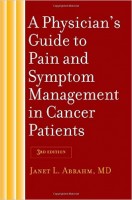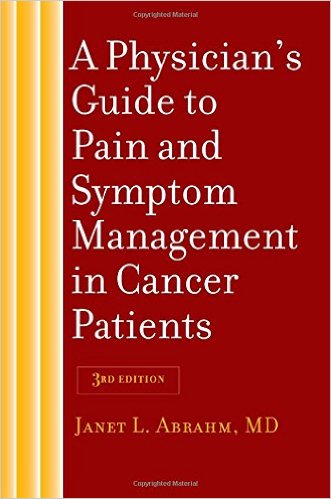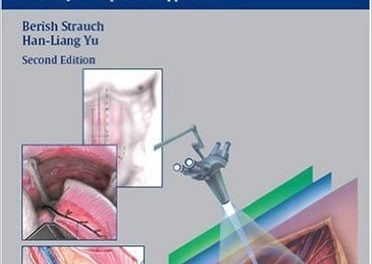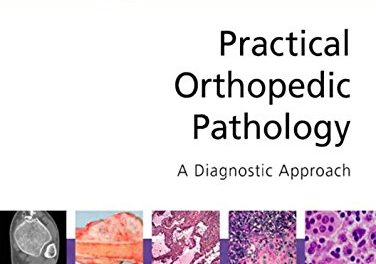 Author: Janet L. Abrahm, MD; with Amanda Moment, MSW; and Arden O’Donnell, MPH
Author: Janet L. Abrahm, MD; with Amanda Moment, MSW; and Arden O’Donnell, MPH
Publisher: Johns Hopkins University Press – 630 pages
Book Review by: Nano Khilnani
The American Cancer Society, in a published online article entitled Cancer Facts and Figures 2014 estimated that 585,720 people, or an average of about 1,600 per day, will die of cancer in that year in the United States.
Of that, it indicated that about one-third or 195,220 of the total cancer deaths will be due to obesity, overweight conditions, and poor nutrition; and another about 30 percent or 176,000 people will die of causes related to tobacco use, such as bronchial and lung cancer. That is a total of 371,220 or 63 percent of the total U.S. cancer deaths in 2014.
What is common among these two types of cancers, and different from other cancers? Both of these cancers are preventable, unlike others. There is hope then, for hundreds of thousands of people. So one sure way to cut the number of cancer deaths in the U.S. is for people to stop overeating and stop smoking tobacco.
There are many other types of cancers that account for the other 214,500 or 37 percent of the total cancer deaths, and affecting other parts of the human body. The most common among them are: breast, blood, colon and rectum, liver, pancreas, prostate, skin, and stomach cancers. Cancers are also caused by infectious diseases and family history. Perhaps not much can be done to reduce these types of cancers if found in advanced stages, except work harder to find a cure.
In 2014, almost three times the number of people or 1,665,540 as those who died of cancer – 585,720 – were diagnosed with that disease. So it is encouraging to know that more than a million people – some 1,079,820, or about two of every three people diagnosed – were saved. Of course even one death is too many, but let us look at the positive side that two thirds were saved, and work to prevent cancer deaths as much as possible, through education and early detection.
There is more good news. Let’s take a look at the larger picture first. About 13.7 million Americans with a history of cancer were alive on January 1, 2012. And the five-year relative survival rate for all cancers diagnosed between 2003 and 2009 is 68 percent, up from 49 percent in the 1975-77 period. While the overall cancer survival rate has been going up (partly due to early diagnosis and creating public awareness) survival statistics vary greatly by cancer type and stage at diagnosis.
Despite the fact that nearly seven of every 10 people diagnosed with cancer were saved from the scourge in 2014, hundreds of thousands of people suffer from the physical pain and emotional anguish, and bear long-lasting psychological and spiritual problems, not to mention severe financial loss if they had no health insurance coverage.
In this book, Dr. Janet L. Abrahm notes that while there are texts that focus on the details of treating the disease, this one helps readers, particularly care providers, focus attention on patients as whole persons and their needs, even if they recovering, but importantly if they are terminally-ill patients, who have been told by their doctors: “I’m sorry. There is nothing more we can do for you.” There is much to know and do for cancer patients, to help them relieve their pain and manage their symptoms. This book is your guide in that mission if you a care provider to a recovering cancer patient or to one who has just a limited time left to live.
Below we provide you an outline of the various topics covered in this book that can help you do your job better:
- Hidden Concerns, Unasked Questions
- Early Days
- Helping Patients Accept Opio9id Medication
- Working with Patients’ Families
- Approaching the End
- Pain Control, Symptom, and Palliative Care
- Assessing the Patient in Care
- Pharmacologic Management of Cancer Pain
- Nonpharmacologic Strategies for Pain and Symptom Management
- Sexuality, Intimacy, and Cancer
- Managing Other Distressing Problems
- The Last Days…and the Bereaved
Author:
Janet L. Abrahm, MD is a professor of medicine at Harvard Medical School and a member of the Department of Psychosocial Oncology and Palliative Care at Dana-Farber Cancer Institute and Brigham and Women’s Hospital.
Contributors:
Amanda Moment, MSW, LICSW; and Arden O’Donnell, MPH, MSW, LICSW.







